how to identify sterling silver flatware, Sterling Silver Flatware is a timeless addition to any table setting, renowned for its elegance and durability. Whether you’re a collector, an enthusiast, or simply looking to add value to your dining experience, knowing how to identify genuine sterling flatware is essential. In this guide, we will explore the key characteristics that distinguish silver from other materials, ensuring you make informed decisions when purchasing or evaluating flatware.
Understanding Sterling Silver
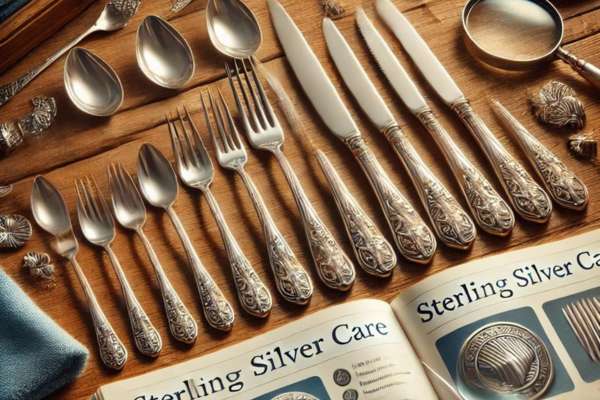
Sterling silver is a high-quality alloy composed of 92.5% pure silver and 7.5% other metals, usually copper. This blend boosts the metal’s strength and durability while maintaining its brilliant luster. Identifying flatware involves checking for hallmark stamps, recognizing its distinct visual and tactile characteristics, and conducting simple tests. flatware is not only prized for its beauty but also for its lasting value, making it a popular choice for both everyday use and special occasions. Understanding these features can help you appreciate and care for your Plate pieces better.
Look for Hallmarks
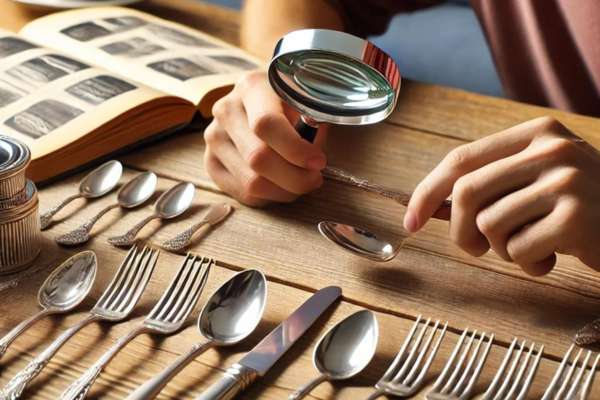
The most reliable way to identify sterling flatware is by checking for hallmarks. These are small stamps or engravings found on the tablespoon, indicating the silver content and the manufacturer’s information. Common hallmarks include:
1. 925″ or “.925: Indicates the piece contains 92.5% silver.
2. Sterling Silver”: Signifies genuine sterling silver.
3. Lion Passant: A British hallmark showing a lion facing left, symbolizing sterling Plate.
Examine the handles and the back of the flatware for these markings, often found in inconspicuous locations.
Assess the Weight and Feel

Assessing the Weight and Feel of Flatware Sterling Flatware stands out with its distinct weight and feel, crucial for determining authenticity. Genuine sterling pieces are heavier than silver-plated or stainless steel counterparts, attributed to silver’s higher density. When held, the tablespoon feels solid and well-balanced, offering a sense of quality. Additionally, the surface of the Plate is smoother, lacking the roughness or visible seams often found in plated items. This combination of weight, balance, and texture is a reliable indicator of a genuine sterling tablespoon, helping you make informed purchasing decisions.
Perform the Magnet Test
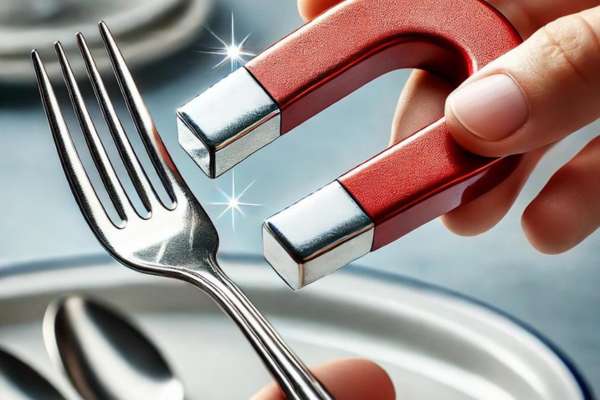
To determine if your flatware is a genuine sterling Plate, perform the magnet test. Silver is not magnetic, so using a small magnet can help identify authenticity. Gently place the magnet near the flatware. If the magnet sticks, the item is not sterling flatware. However, if the magnet does not attract, it is a good indication that the tablespoon could be genuine silver. This simple test is a quick and effective way to verify the authenticity of your tablespoon pieces, ensuring you have a quality Plate.
Conduct the Acid Test
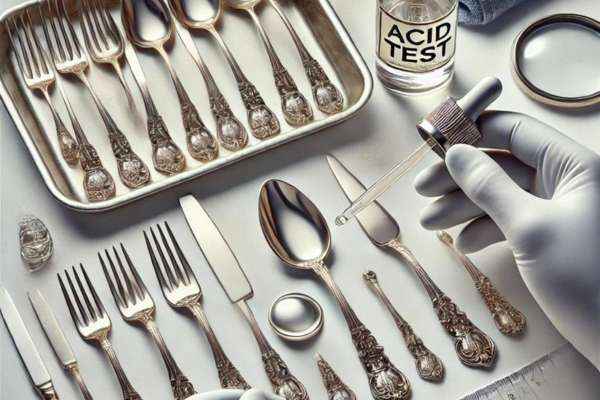
For a more conclusive test, consider performing an acid test. This involves using a silver testing kit, which includes a testing solution and a stone. Apply a small drop of the solution to a discreet area of the flatware and observe the color change. Genuine sterling silver will turn a creamy white color, while other materials may produce different reactions. It’s important to handle the testing kit carefully and follow the instructions to avoid damaging the flatware.
Check for Tarnish
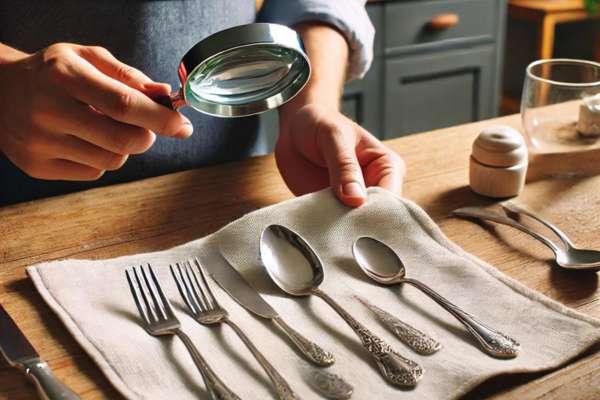
Sterling Plate naturally tarnishes over time, developing a dark patina. This is due to the reaction between silver and sulfur in the air. While tarnish can be polished away, it is an indicator of genuine sterling. Look for areas where tarnish may have accumulated, such as crevices or intricate designs. Silver-plated flatware may tarnish, but the base metal will show through in worn areas.
Evaluate the Craftsmanship
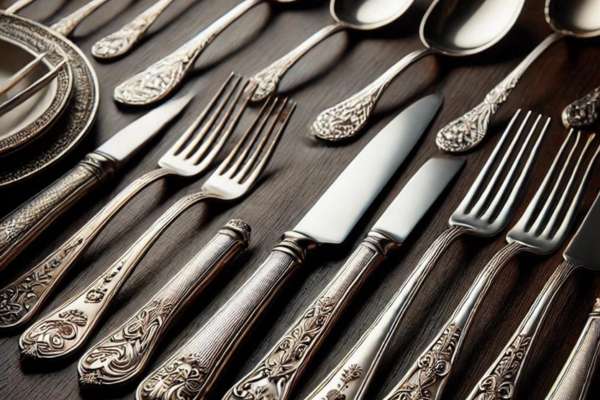
flatware often features intricate designs and fine craftsmanship. Examine the details closely, paying attention to the precision of the engravings and the overall finish. High-quality sterling flatware will have consistent patterns, smooth edges, and a polished appearance. Inferior materials or plated items may exhibit signs of poor workmanship, such as uneven designs or rough edges.
Verify with a Professional Appraiser
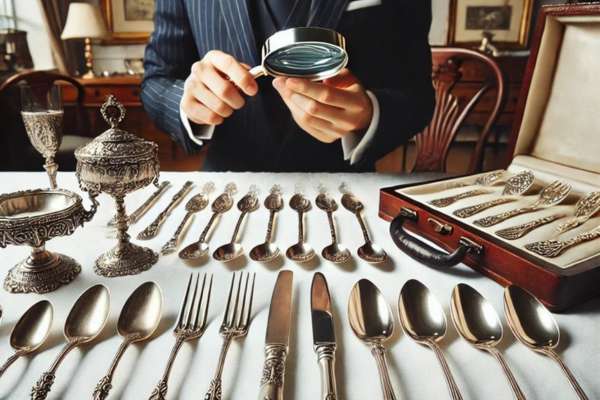
If you’re uncertain about the authenticity of your flatware, seek the assistance of a professional appraiser. They have the expertise and tools to accurately identify sterling silver and provide a detailed evaluation. An appraisal can also offer insight into the value and history of the flatware, making it a worthwhile investment for collectors and enthusiasts.
Testing Methods
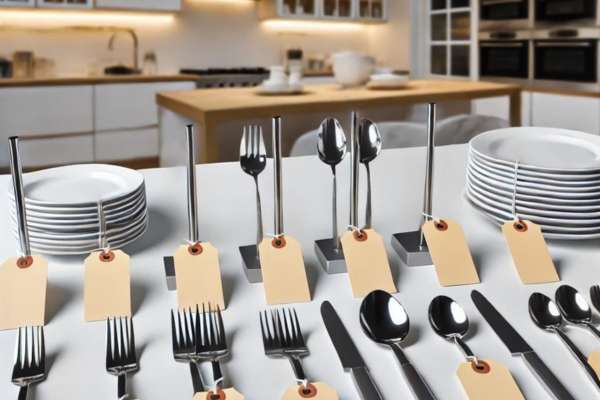
Testing methods for flatware can be simple and effective. At home, you can perform the magnet test and ice test to verify authenticity. A real silver piece is non-magnetic, so if a magnet sticks, it’s not silver. The ice test involves placing an ice cube on the silver item real will melt the ice quickly due to its high thermal conductivity. For a more detailed analysis, use the acid test. Obtain a plate testing kit, scratch a small area on the piece, and apply a drop of the testing acid. If the liquid changes color according to the kit’s chart, you can confirm the flatware purity.
Common Pitfalls and Mistakes
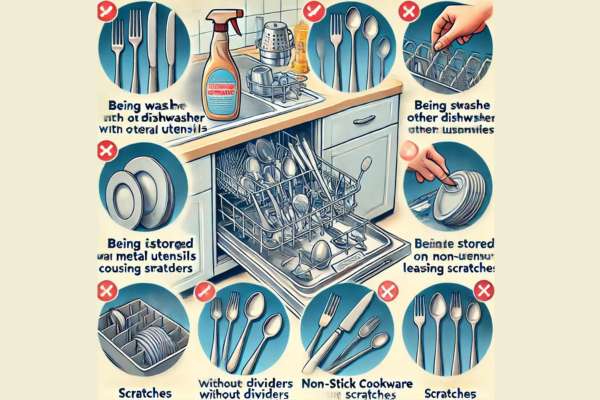
When identifying sterling flatware, common pitfalls include mistaking plated items for genuine sterling and overlooking hallmark stamps. Misinterpreting these marks can lead to costly errors. To avoid counterfeit items, always look for the “925” mark, indicating 92.5% silver content. Check for reputable maker’s marks and consult reliable guides or experts. Verify the weight silver is heavier than the plated pieces. Be cautious of deals that seem too good to be true, and consider buying from established dealers. By following these tips, you can confidently avoid counterfeits and ensure the authenticity of your sterling Plate collection.
Visual and Physical Characteristics of Sterling Silver vs. Silver-Plated Items
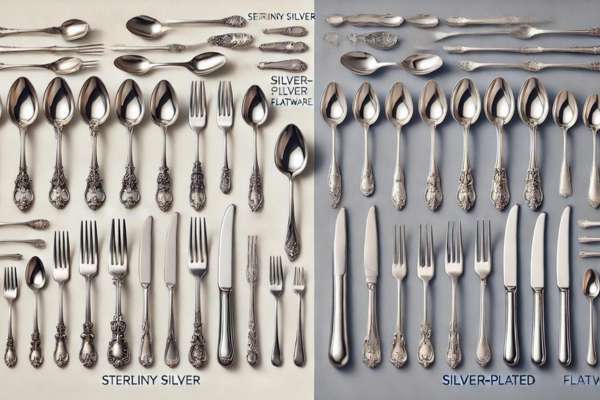
Sterling silver-plated items differ significantly in appearance and weight. silver, made of 92.5% pure Plate, often has a richer, more lustrous finish compared to the thin silver layer on silver-plated items. This difference in material also results in sterling silver being heavier. Tarnish is another distinguishing factor sterling Plate tarnishes uniformly, developing a dark patina over time, while silver-plated items often show tarnish in spots, revealing the base metal underneath. Recognizing these characteristics helps in distinguishing between the two, ensuring informed purchasing and proper care.
Conclusion
Identifying sterling silver flatware requires a keen eye for detail and knowledge of specific characteristics. By checking for hallmarks, assessing the weight and feel, performing simple tests, and seeking professional verification, you can confidently identify genuine sterling silver flatware. With this knowledge, you can make informed decisions, ensuring that your tablespoon collection or dining experience is truly exceptional.
